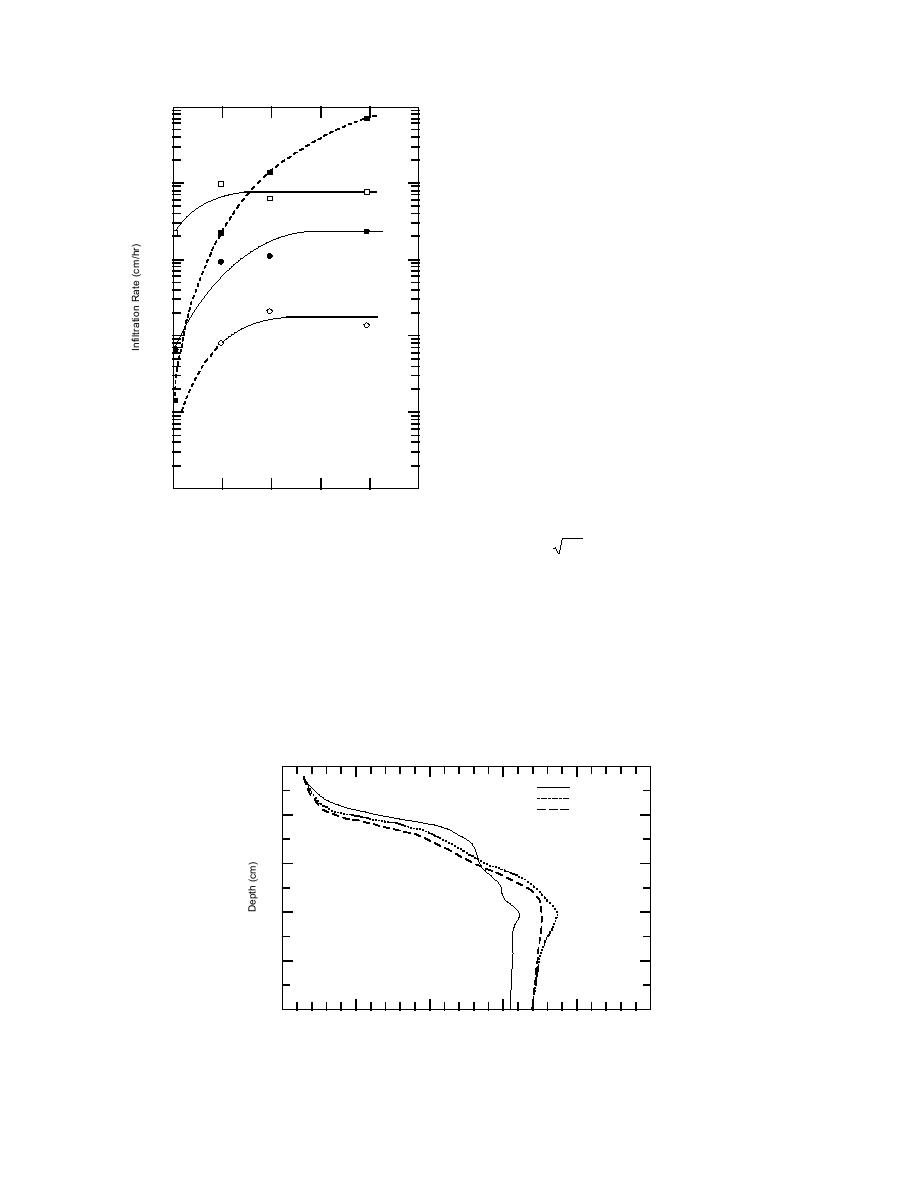
100
hillslope sediment is transported in rills, and
Meyer et al. (1975) reported a threefold increase
Clay Loam
in soil loss following rill development on a hill-
slope. Thus, rill (and rut) erosion is a geomorphi-
10
Loamy Sand
cally significant process (Slattery and Bryan
1992).
The intermittent flows in rills and ruts are usu-
Sandy Loam (Greeley)
ally appreciably deeper than the height of the
coarsest roughness elements within them and, in
1
this regard, are hydraulically similar to conven-
tional open-channel flows in rivers (Thornes
Sandy Loam (Akron)
1980, Hairsine and Rose 1992). The erosivity of
such flows is directly related to runoff volume
0.1
and velocity
Q = AV
where Q = runoff volume
0.01
A = cross-sectional flow area
V = flow velocity.
The velocity is determined by channel roughness,
cross-sectional shape, and slope and can be esti-
0.001
0
1
2
3
4
5
mated by the Chezy (eq 1) or Manning's (eq 2)
Number of Freezing and Thawing Cycles
equations
Following Compaction
V = C RS
(1)
Figure 4. Effect of FT cycles on infiltration rate of
compacted soils. (After Akram and Kemper 1979.)
V= 1.49/n R2/3 S1/2
(2)
where V = flow velocity
trate surface runoff, which increases its sediment
C, n = roughness coefficients
transport capacity and subsequent soil erosion.
R = hydraulic radius, A/P (P, wetted peri-
Foltz (1993) determined that there is 200400%
meter)
more erosion on rutted roads than on unrutted
S = channel bottom slope (approximately).
roads. Morgan (1977) determined that rill sediment
transport exceeded that on inter-rill surfaces by a
It is apparent that processes that change rill or
factor of 40 on an 11 slope. Mutchler and Young
rut cross-sectional shape can have a major influ-
(1975) determined that more than 80% of eroded
ence on flow erosivity and thus on sediment
0
Check
9 Mg/axle
18 Mg/axle
10
20
30
40
50
0.0
0.5
1.0
1.5
2.0
2.5
Penetrometer Resistance (MPa)
Figure 5. Penetrometer resistance 4 years after initial loading of Webster clay
loam in Waseca, Minnesota, with a wheeled vehicle. (After Voorhees et al. 1986.)
5



 Previous Page
Previous Page
